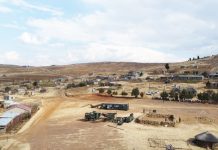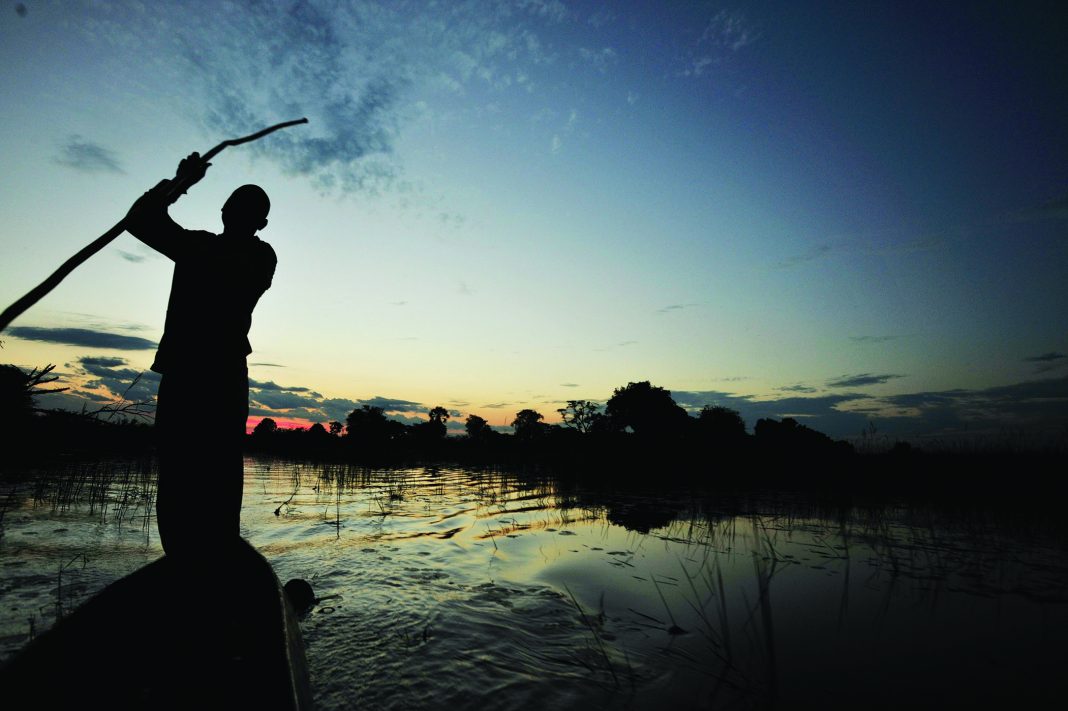
By Joel Konopo | 19 November 2020
AN investigation by Botswana’s INK Centre for Investigative Journalism provides insight into Botswana’s possible version on the killing of four Namibians at the Chobe River two weeks ago.
It also looks at the last minutes of the four fisherman who were gunned down by the Botswana Defence Force (BDF).
Major questions have emerged about the killing of four Namibians, including claims that the victims were unarmed fishermen, and that one may have been executed after he was arrested.
Botswana has largely been silent on the incident, preferring to issue short, carefully calculated statements.
The country’s statement issued last week made no mention of the suspects carrying firearms or elephant tusks, or that they shot at the anti-poaching unit.
But there are hints from a Botswanan military source that they are blaming the deceased for allegedly having a gun and shooting at them first.
The incident heightened tensions between Namibia and Botswana, sparking protests in Windhoek and at Katima Mulilo last Friday, in which Botswanan flags were burnt and a Botswana-registered vehicle damaged.
The two governments released statements affirming their “excellent bilateral relations”.
Botswana has been accused of applying an unofficial shoot-to-kill policy against poachers.
At least 12 people suspected of poaching have been killed this year by the BDF’s anti-poaching unit, most of them Namibians, according to the records reviewed by INK.
BOTSWANA’S PROBABLE VERSION
The incident took place on the night of 4 November in the Chobe River at Sedudu Island near Kasane in northern Botswana.
BDF spokesperson colonel Tebo Dikole said the army “came in contact with a syndicate of poachers believed to be part of a network responsible for cross-border organised poaching” at around 23h00.
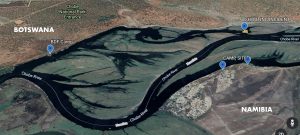
The deceased’s family has rejected this version.
Pressed further, Dikole said he is “constrained” to comment as investigations are ongoing.
INK conducted a telephonic interview with a BDF officer in the anti-poaching unit. The source was not present during the shooting, but arrived shortly afterwards and helped to guard the bodies overnight.
The officer from the BDF camp at Kasane asked to remain anonymous. His name and rank are known to INK.
He said the anti-poaching unit received a report of an imminent poaching incident at Sedudu Island at about 17h00 on 4 November.
The source said a motorboat with about 10 BDF soldiers with assault rifles and night-vision gear was sent from the Sedudu camp to ambush the suspects.
At about 22h00, the BDF source said the soldiers observed four figures paddling two canoes along the edge of the island carrying objects he alleged were elephant tusks.
He said the four were startled on seeing reflectors from the life jackets worn by the soldiers in water and “assumed an attack mode”.
“They actually opened fire,” the anonymous military source said. “And you know what soldiers do when an enemy opens fire.”
Tommy Nchindo, Simvula Munyeme and Ernest Wamunyima Nchindo were shot in the chest and died instantly in their canoes, the source said.
Martin Nchindo was sprayed with bullets when he tried to swim to safety.
The Botswanan source claimed the fishermen’s rifle sank to the bottom of the river, which is infested with hippos and crocodiles.
They had not killed any elephant, he said, as their mission was to ‘harvest’ elephant tusks stored on the island.
He said: “There were no fishing nets, only hunting spears.”
VERSION DEBUNKED
This version was challenged by two Namibians who live in the area and who claim to have been close to the spot where the events took place.
Matengu Mavuna in a telephonic interview from the nearby village of Kasika in the Zambezi region said he had loaded the canoes before what he said was a fishing expedition, and that they contained no guns.
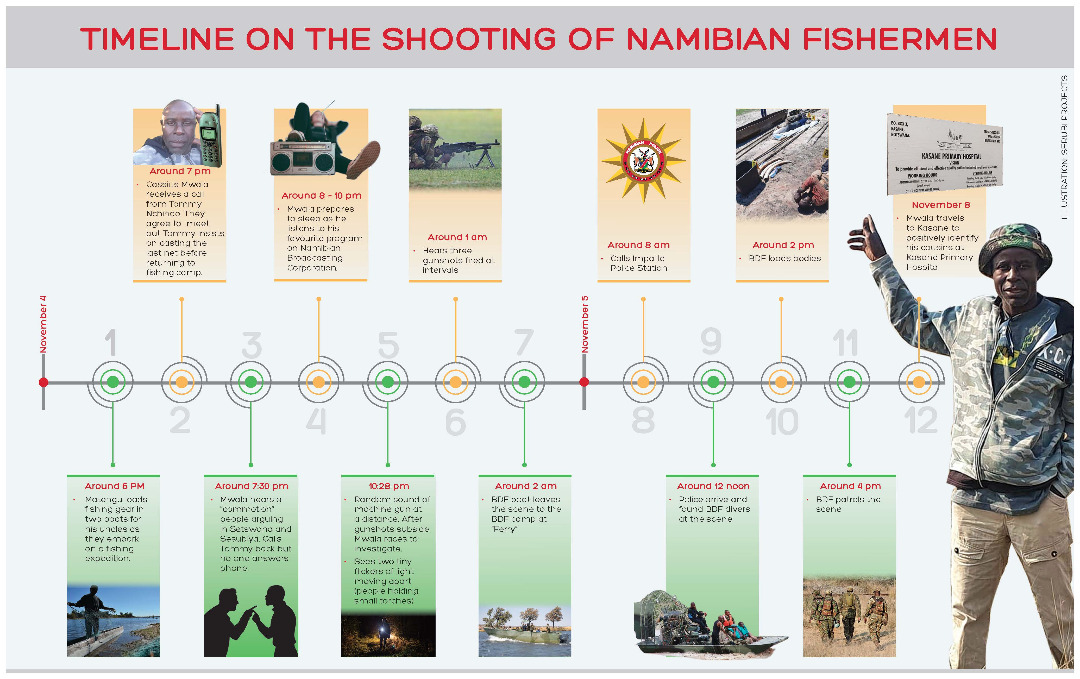
Timeline of shooting incident: Click here
“I loaded two nets in the boat, both 2,5 m wide and one 800 m long and the other 600 m long,” said Mavuna.
“I saw a knife and two spears in the boats. I didn’t see a gun.”
He said: “My uncles left the fishing camp at 18h30, but never returned.”
George Nchindo, the brother of the Nchindos, told INK that it is common practice to fish at night in the Chobe and Linyanti rea.
“When hippos are out of the water grazing, it is safe to fish,” he said.
He said it was possible that his brothers had strayed across the border without realising it, as the Chobe River at that point is a small channel and it is not easy to know where you are at night.
He challenged the BDF’s scuba divers to find the alleged rifle used by his brothers.
“We want to see the serial number. The BDF’s behaviour is sickening,” he said.
FINAL MINUTES
The Nchindos’ cousin Cassius Mwala who has a fishing camp close to Sedudu Island, said he last spoke to Tommy Nchindo at around 19h00 on 4 November.
At about 20h00 he says he heard a “commotion” of people speaking in Setswana and Subiya. He phoned Tommy and Martin, but they did not answer.
At around 22h30, he heard random shots from an automatic rifle and raced to the scene immediately after the shooting subsided.
“I saw two tiny lights of torches moving towards each other in the water in the distance,” Mwala said.
Accompanied by a colleague, he waited and watched.
At around 01h00, he said they heard “three shots fired at intervals”.
Terrified, they waited on the mosquito-infested riverbank, and an hour later, a boat roared from the scene to the BDF camp.
At first light, he said he reported the incident to the Impalila police, who took hours to respond.
Mwale said what really shocked him was his visit to Kasane Primary Hospital to identify the bodies of the dead men.
He said Ernest Nchido had visible bruises on his head. At that point it dawned on him that Ernest may have been beaten after being arrested and then “finished off” by the soldiers.
“I viewed the bodies. Ernest had bruises. Was this the deliberate killing of innocent people?” he asked.
SHOOT TO KILL
In the past, the BDF has denied any involvement in human rights violations in the border area, saying its operations take place “under prevailing statutes”.
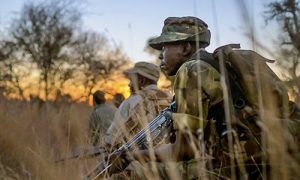
The INK Centre has previously reported that over the past two decades, 30 Namibians and at least 22 Zimbabweans have been killed in Botswana’s anti-poaching operations, but the Namibian authorities and human rights groups claim the figure could be much higher.
The Kavango-Zambezi Transfrontier Conservation Area has 200 000 wild elephants, more than anywhere else in the world.
Tourism contributes 4,9% to Botswana’s gross domestic product (GDP).
Botswana’s former minister of environment, wildlife and tourism, Tshekedi Khama, the brother of former president Ian Khama, lifted the lid on the government’s approach to poaching in a 2013 interview with British filmmaker, Tom Hardy, who made a documentary called ‘The Poaching Wars’.
“It’s a culture; we have to kill the supply [of poachers] to starve the culture,” Khama said.
“That is one of the reasons why in Botswana, with our anti-poaching unit, we don’t necessarily interrogate the poacher,” he told the seemingly stunned filmmaker.
“That is a position we adopted to send a clear message: If you want to come and poach in Botswana, one of the possibilities is that you may not go back to your country alive.”
He went on to say that even if a suspected poacher drops his gun and raises his hands, the BDF will shoot.
* This article is produced by INK Centre for Investigative Journalism, an independent, non-profit newsroom that produces investigative journalism in the public interest.





